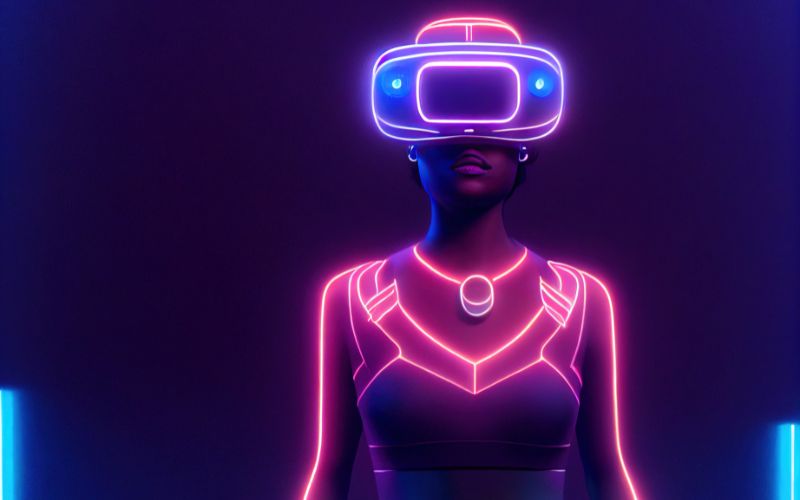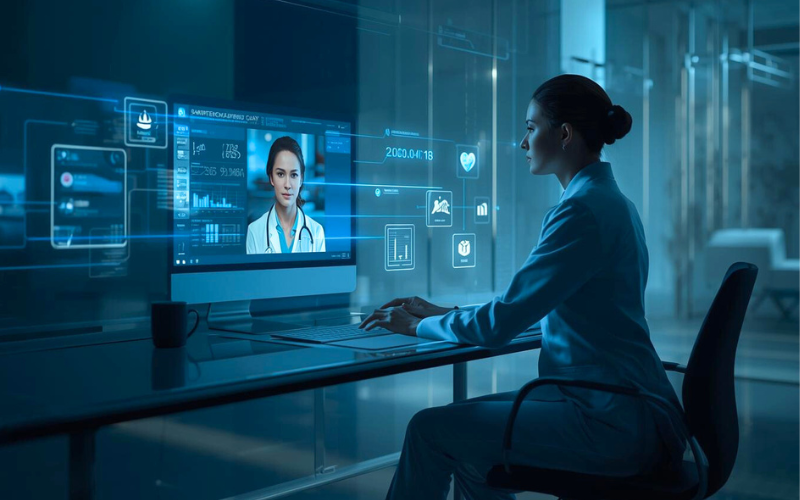The Rise of Virtual Reality in Med-Tech
Virtual Reality (VR) is revolutionizing the med-tech industry, offering innovative solutions that enhance patient care, streamline medical training, and improve surgical precision. With applications ranging from immersive surgical training to patient rehabilitation and mental health treatment, VR is paving the way for a more efficient, accessible, and technology-driven healthcare system.
VR in Surgical Training and Simulation
VR is transforming surgical education by providing immersive, risk-free environments for skill development. Key benefits include:
- Repetitive Practice: Surgeons can perform procedures multiple times until they achieve proficiency.
- Realistic Simulations: VR offers lifelike surgical environments with haptic feedback, improving dexterity and confidence.
- Cost-Effective Training: Reduces reliance on cadavers and physical models, cutting costs and resource needs.
- Portable Solutions: Compact VR systems allow training in smaller facilities without large simulation centers.
VR in Ophthalmology
VR is making significant strides in eye care, from diagnostics to treatment, including:
- Visual Field Testing: VR devices detect glaucoma and vision impairments with increased accuracy.
- Surgical Training: Ophthalmologists practice intricate procedures, such as retinal and cataract surgeries, in a risk-free environment.
- Patient Education: VR visualizations help patients understand eye conditions and surgical procedures.
- Eye Rehabilitation: Gamified therapies treat amblyopia and other disorders effectively.
- Orthoptics Examination: Enhances diagnostic precision for strabismus and other conditions.
- Dark Adaptation Testing: Facilitates early detection of retinal diseases like macular degeneration.
- Space Optimization: Eliminates the need for bulky diagnostic equipment, optimizing clinical space.
VR in Patient Treatment and Rehabilitation
VR is transforming rehabilitation for patients recovering from strokes, injuries, and neurological conditions. Key advantages include:
- Motivation: Engaging, gamified environments increase patient participation.
- Customizability: Personalized therapy adapts to individual needs.
- Remote Accessibility: VR therapy is accessible from home, improving adherence to treatment.
- Upper Limb and Finger Rehabilitation: Enhances dexterity and strength in stroke or injury recovery.
- Space Efficiency: Portable setups reduce the need for large rehab centers.
VR in Preoperative Planning and Visualization
Surgeons use VR to visualize complex anatomical structures in 3D before procedures, leading to:
- Precise Planning: Identifies potential surgical challenges in advance.
- Collaborative Insights: Enables teams to refine surgical strategies.
- Patient Education: Enhances patient understanding of conditions and treatments.
- Time-Saving: Reduces surgery durations through precise execution.
VR in Mental Health and Pain Management
VR is a groundbreaking tool for mental health therapy and non-pharmaceutical pain management. Key applications include:
- Exposure Therapy: Controlled environments for treating PTSD, anxiety, and phobias.
- Relaxation Programs: Immersive VR landscapes reduce stress and anxiety.
- Pain Reduction: Studies show VR can lower pain perception by up to 40%.
- Portability: Lightweight VR headsets enable therapy in diverse settings.
Challenges and Limitations of VR in Med-Tech
Despite its potential, VR adoption in healthcare faces challenges:
- Cost and Accessibility: High initial costs limit widespread adoption.
- Training Requirements: Medical professionals need specialized training.
- Technical Limitations: Latency and hardware compatibility issues persist.
The Future of VR in Med-Tech
As technology advances, VR’s role in med-tech will expand through:
- AI-Enhanced VR: Real-time analytics and adaptive learning will enhance training and diagnostics.
- Wearable VR Devices: Compact, affordable solutions will improve accessibility.
- Global Collaboration: VR will facilitate remote medical training and consultations worldwide.
Conclusion: Embracing the VR Revolution in Healthcare
VR is no longer a futuristic concept but a transformative force in med-tech. By improving efficiency, accessibility, and patient outcomes, it is reshaping modern healthcare. From enhancing surgical training to revolutionizing patient care, VR’s applications are making medical procedures safer and more effective.





